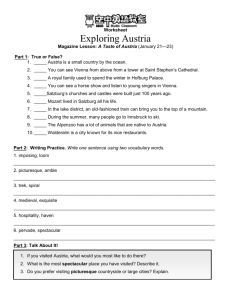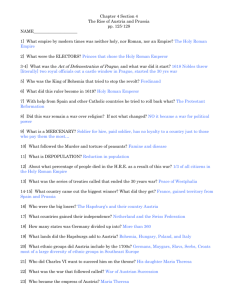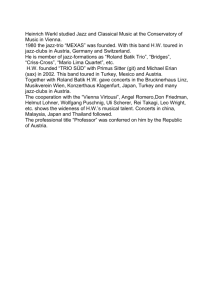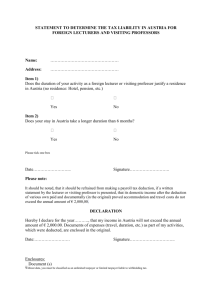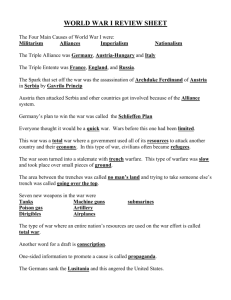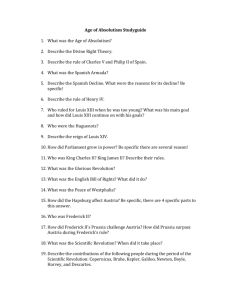Austria Summary - UNPhase1 3rd-4th
advertisement
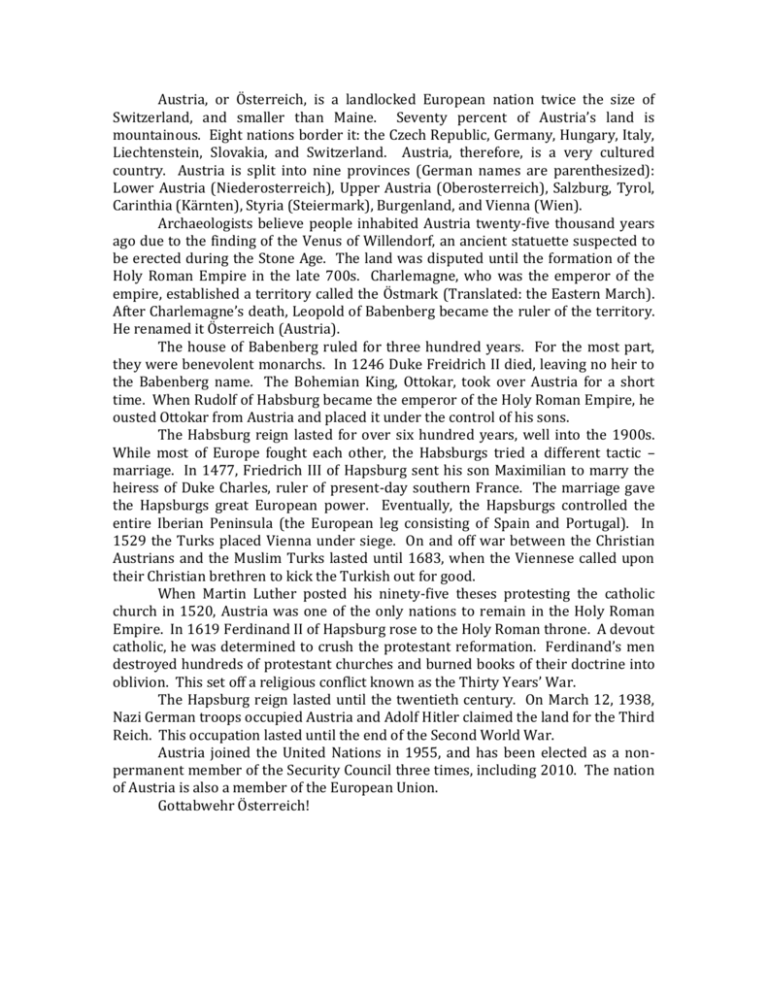
Austria, or Österreich, is a landlocked European nation twice the size of Switzerland, and smaller than Maine. Seventy percent of Austria’s land is mountainous. Eight nations border it: the Czech Republic, Germany, Hungary, Italy, Liechtenstein, Slovakia, and Switzerland. Austria, therefore, is a very cultured country. Austria is split into nine provinces (German names are parenthesized): Lower Austria (Niederosterreich), Upper Austria (Oberosterreich), Salzburg, Tyrol, Carinthia (Kärnten), Styria (Steiermark), Burgenland, and Vienna (Wien). Archaeologists believe people inhabited Austria twenty-five thousand years ago due to the finding of the Venus of Willendorf, an ancient statuette suspected to be erected during the Stone Age. The land was disputed until the formation of the Holy Roman Empire in the late 700s. Charlemagne, who was the emperor of the empire, established a territory called the Östmark (Translated: the Eastern March). After Charlemagne’s death, Leopold of Babenberg became the ruler of the territory. He renamed it Österreich (Austria). The house of Babenberg ruled for three hundred years. For the most part, they were benevolent monarchs. In 1246 Duke Freidrich II died, leaving no heir to the Babenberg name. The Bohemian King, Ottokar, took over Austria for a short time. When Rudolf of Habsburg became the emperor of the Holy Roman Empire, he ousted Ottokar from Austria and placed it under the control of his sons. The Habsburg reign lasted for over six hundred years, well into the 1900s. While most of Europe fought each other, the Habsburgs tried a different tactic – marriage. In 1477, Friedrich III of Hapsburg sent his son Maximilian to marry the heiress of Duke Charles, ruler of present-day southern France. The marriage gave the Hapsburgs great European power. Eventually, the Hapsburgs controlled the entire Iberian Peninsula (the European leg consisting of Spain and Portugal). In 1529 the Turks placed Vienna under siege. On and off war between the Christian Austrians and the Muslim Turks lasted until 1683, when the Viennese called upon their Christian brethren to kick the Turkish out for good. When Martin Luther posted his ninety-five theses protesting the catholic church in 1520, Austria was one of the only nations to remain in the Holy Roman Empire. In 1619 Ferdinand II of Hapsburg rose to the Holy Roman throne. A devout catholic, he was determined to crush the protestant reformation. Ferdinand’s men destroyed hundreds of protestant churches and burned books of their doctrine into oblivion. This set off a religious conflict known as the Thirty Years’ War. The Hapsburg reign lasted until the twentieth century. On March 12, 1938, Nazi German troops occupied Austria and Adolf Hitler claimed the land for the Third Reich. This occupation lasted until the end of the Second World War. Austria joined the United Nations in 1955, and has been elected as a nonpermanent member of the Security Council three times, including 2010. The nation of Austria is also a member of the European Union. Gottabwehr Österreich!
